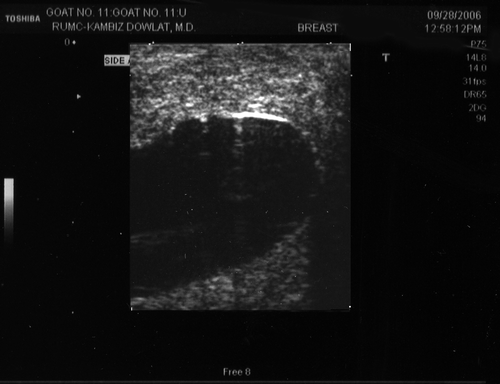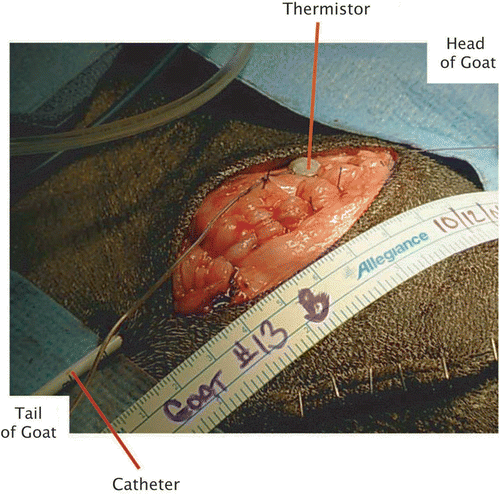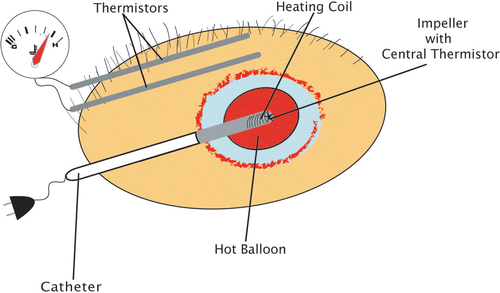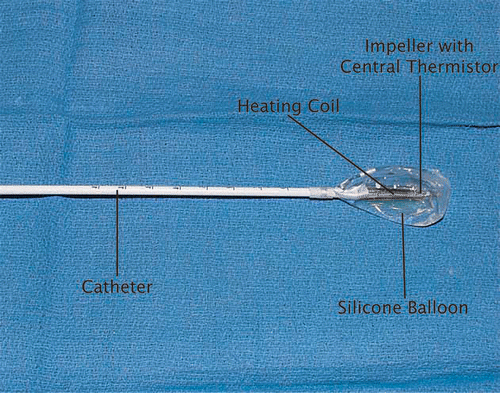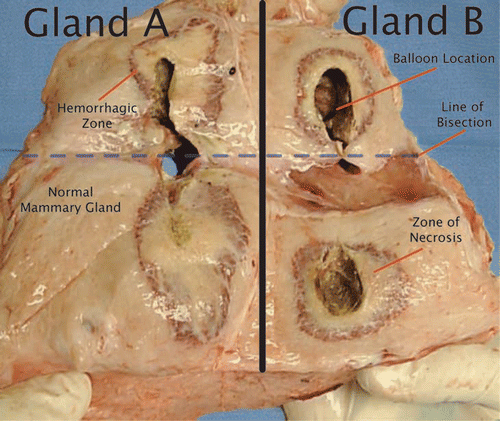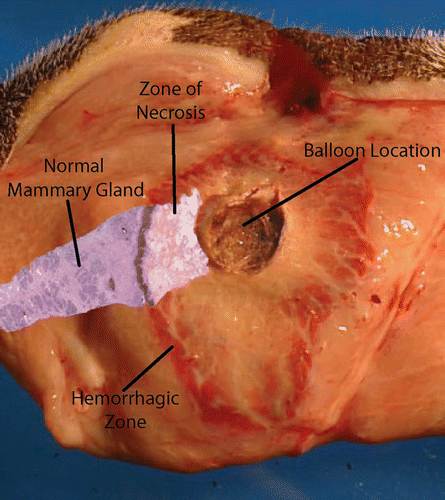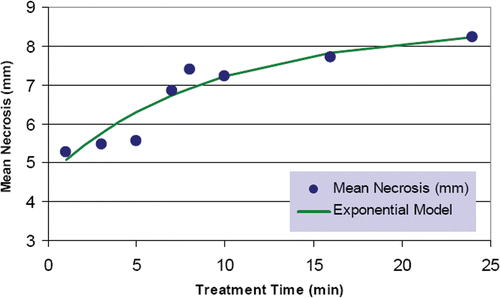Figures & data
Figure 5. (A) Sketch of mammary gland sectioning at 3–4 mm intervals. (B) Representative section with radial sectioning at 3, 6, 9, and 12 o’clock.
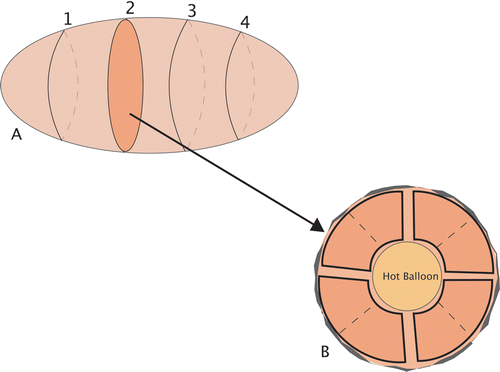
Figure 6. Histologic section of treated mammary gland. (A) Completely adjacent glandular structure immediately adjacent to the hot balloon. Underlying necrotic glands with normal appearing nuclei. (B) Glandular tissue with prominent new vessel formation, polymorphonuclear cells, and karyorrhectic debris. (C) Prominent new vessel formation in a background of myxoid stroma with mostly mononuclear cell infiltrate. No residual ductal glands are seen. (D) Morphologically normal mammary gland.
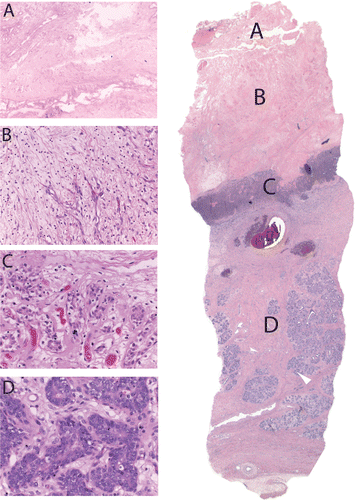
Figure 7. Average thermistor (sensor) readings (°C) for five glands treated for 15 minutes at 90°C balloon/central temperature.
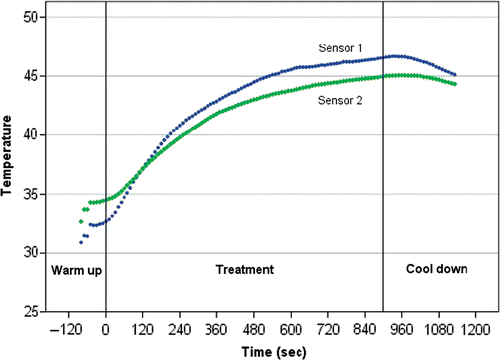
Table I. Data of treated goat mammary glands with treatment time and resulting mean necrosis during series I (FDA-approved ThermaChoice device).
Table II. Data of treated goat mammary glands with treatment time and resulting mean necrosis during series II (modified ThermaChoice device).
